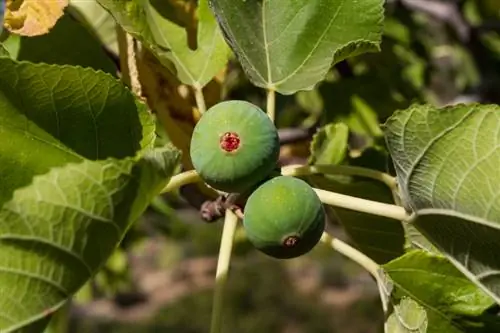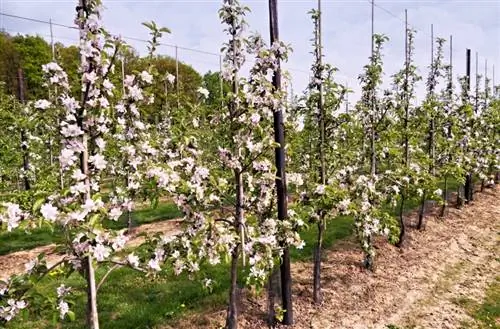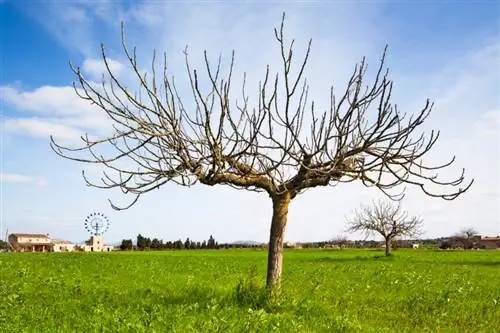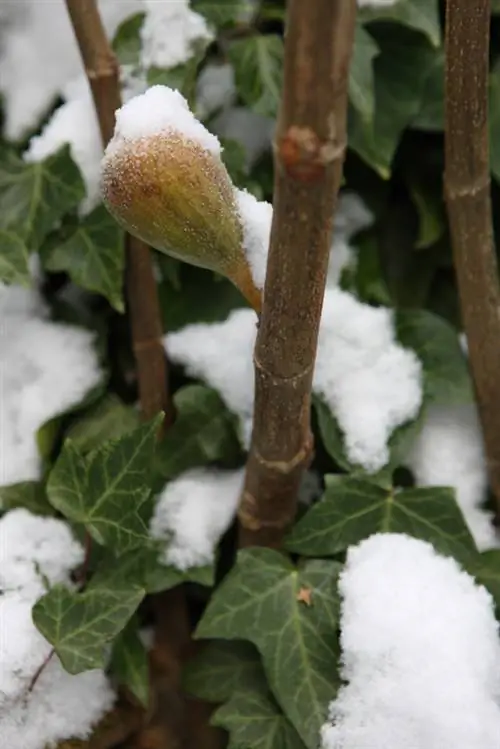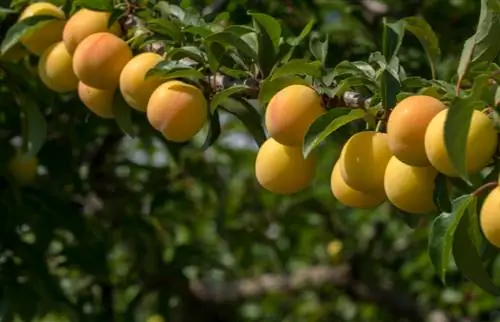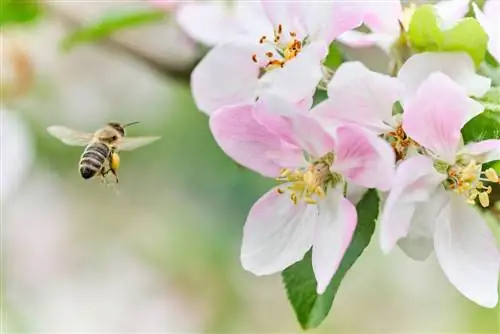- Author admin [email protected].
- Public 2023-12-16 16:46.
- Last modified 2025-06-01 06:02.
Fig trees, unlike many well-known fruit trees, do not produce flowers that are visible to the outside world. The numerous small inflorescences are located in three to five centimeter large, spherical shoots and represent a species-specific peculiarity of the fig.
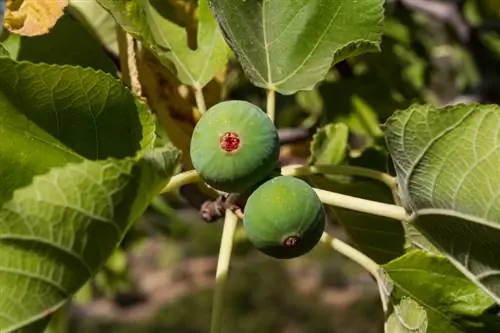
What does the flower of a fig tree look like and how does pollination take place?
Fig tree flowers are hidden in spherical shoots that contain many small inflorescences. Fertilization occurs by fig gall wasps. Cultivated fig trees in temperate zones do not require cross-pollination and, depending on the variety, produce fruit on the annual wood up to three times a year.
Well protected inflorescences
This flower shape is created because the inflorescence axis of the fig grows upwards in a ring. The many small individual flowers thrive on the inside of this axis cup. A small opening remains at the top of the inflorescence. This is loosely closed by bracts. When the fig ripens, the leaves recede and almost completely close the fruit.
If you open a ripe fig, you will see numerous tiny nuts surrounded by the tasty pulp. Each seed is an independent drupe that was formed from one of the small flowers.
Wasp and fig - an inseparable symbiosis
The real fig is monoecious, with separate sexes and produces both male and female flowers. These figs are fertilized by the two to three millimeter large fig gall wasp. The animal lays its eggs in the male ovary of the flowers and lives there during the larval stage. When they hatch, the female gall wasps ingest the pollen. They carry it into the female fruit clusters of the fig tree in search of a suitable place to lay eggs.
Due to the complicated flower biology of the fig, the wasp can only lay its eggs in the male flowers. The aromatic fruits develop from the fertilized female flowers.
Figs that do not rely on pollination
Since the fig gall wasp is only native to the south of the Alps, figs can only be cultivated in our latitudes since fig trees that bear fruit without cross-pollination were successfully bred. Depending on the variety and location, the flowers form on annual wood up to three times a year.
This is how you can distinguish the figs into three main types:
- Smyrna type: The figs ripen after fertilization by the wasp
- Adriatic type: Fruits develop without fertilization. Since the yields are higher, this fig is now preferred for cultivation.
- San Pedro type: One generation of flowers forms fruits without pollination while the second generation of flowers forms fruits with fertilization.
Tips & Tricks
Wild forms of the fig from the Mediterranean region do not produce fruit in our latitudes. Therefore, avoid digging up a fig tree as a souvenir while on vacation. This will save you the disappointment of caring for a fig that will never bear fruit.

